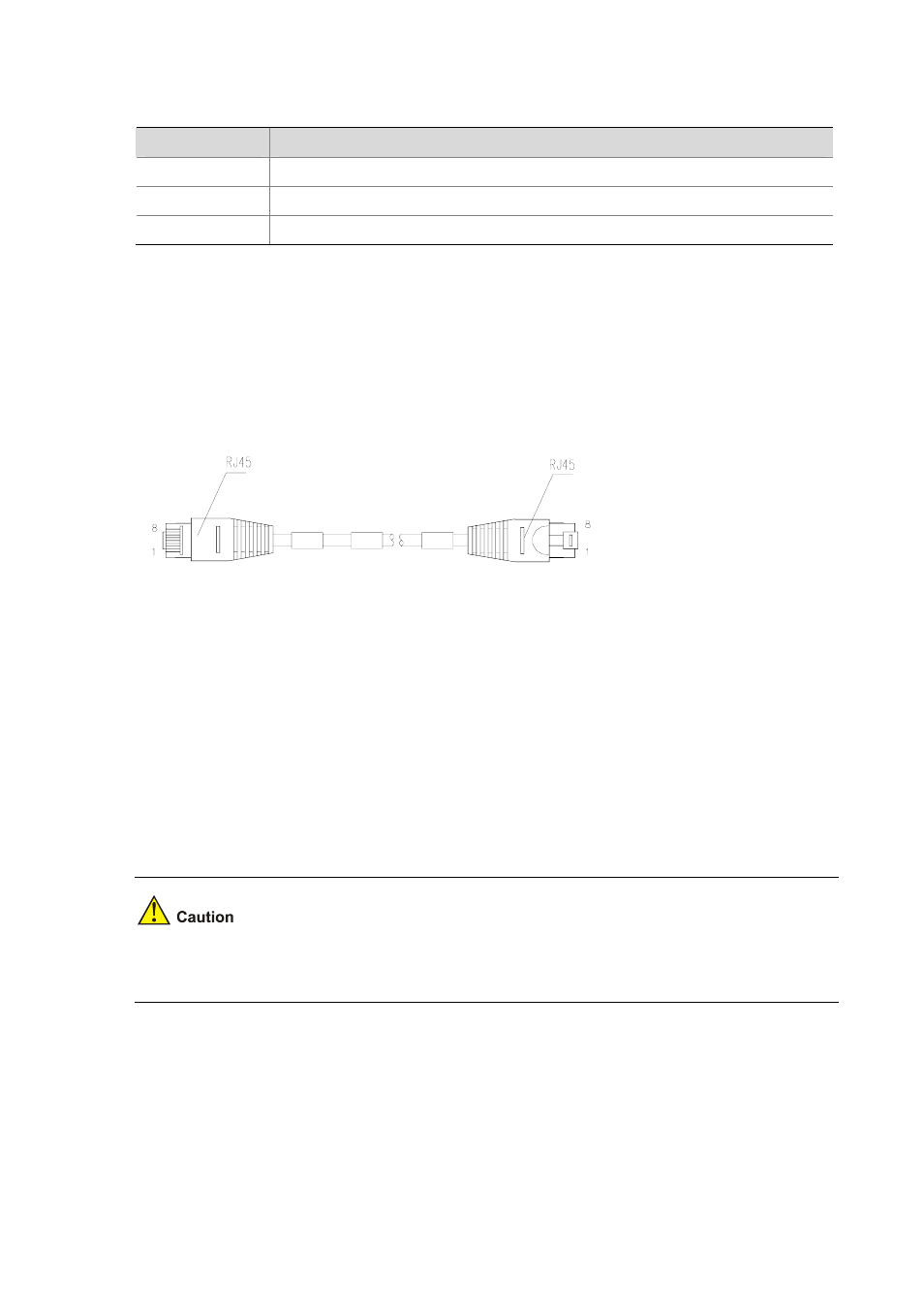Interface cable, Connecting the interface cable – H3C Technologies H3C MSR 50 User Manual
Page 23

2-3
Table 2-2 LEDs on the panel
LED
Description
Steady ON
A link is present, but there is no data being transmitted or received.
OFF
No link is present.
Blinking
A link is present and there is data being transmitted and received (ACT).
In addition, there is a POE LED on each module, which is provided for the corresponding modules
(SIC-4FSW-POE and DSIC-9FSW-POE) with the POE function.
Interface cable
Typically, a category-5 twisted pair cable is adopted to connect the 10BASE-T /100BASE-TX Ethernet
interface to the Ethernet, as shown in the following figure:
Figure 2-3 Ethernet cable
Ethernet cables fall into two categories: straight-through cables and crossover cables:
z
Straight-through cable: The wire sequences of the twisted pair cable crimped in the RJ-45
connectors at both ends are completely the same. It is used to connect terminal devices (such as
PCs, routers) to Hubs or LAN Switches.
z
Crossover cable: The wire sequences of twisted pair cable crimped in the RJ-45 connectors at both
ends are different. It can be used to connect two terminal devices (such as PCs and Routers).
For the pinouts, identification and making methods of these two kinds of network cables, see Low-End
and Mid-Range Series Routers Cable Manual
.
Connecting the interface cable
Connect a cable to the port with the correct mark. Misplugging is prone to impair the interface module
and even damage the router.
If the SIC has been properly installed, follow these steps to connect the interface cable:
Step1 Connect the Ethernet port of SIC to a PC or router using a crossover cable and to a Hub or LAN Switch
using a straight-through cable;
Step2 Check the status of LINK LED on the panel: ON means the link is connected and OFF means the link
is not connected. In the latter case, check the line.
